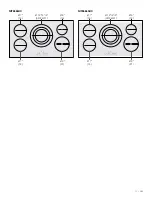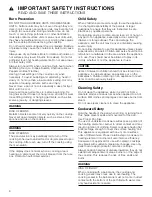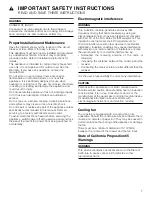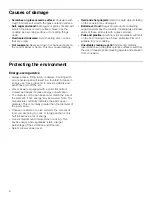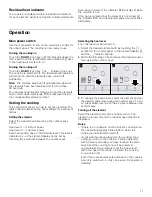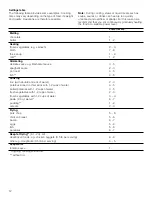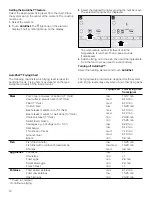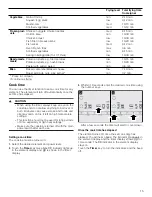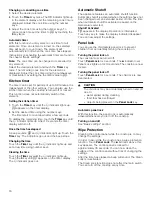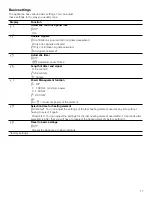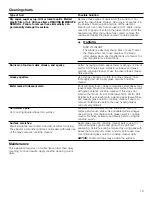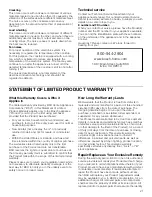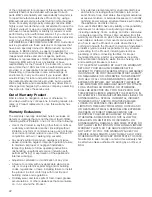
8
Causes of damage
▯
Scratches on glass ceramic surface:
Cookware with
rough bottoms will scratch the glass ceramic surface.
▯
Salt, sugar and sand:
Salt, sugar or grains of sand will
scratch the glass ceramic surface. Never use the
cooktop as a working surface or for setting things
down.
▯
Overheated cookware:
Avoid heating pots or pans
that are empty.
▯
Hot cookware:
Never set down hot pans and pots on
the control panel or frame. This may cause damage.
▯
Hard and sharp objects:
Hard or sharp objects falling
on the cooktop may damage it.
▯
Boiled-over food:
Sugar and products containing
sugar may damage the cooktop. Immediately eliminate
spills of these products with a glass scraper.
▯
Foils and plastics:
Aluminum foil and plastic will melt
on the hot cooking zones. Stove protective film isn't
suitable for your cooktop.
▯
Unsuitable cleaning agent:
Shimmering metallic
discolorations on the glass ceramic surface result from
the use of inappropriate cleaning agents and abrasion
from cookware.
Protecting the environment
Energy-saving advice
▯
Always place a fitting lid on cookware. Cooking with
an uncovered pan will result in a four-fold increase in
energy use. Use a glass lid to provide visibility and
avoid having to lift the lid.
▯
Use cookware equipped with a solid, flat bottom.
Curved pan bases increase energy consumption.
▯
The diameter of the pan base must match the size of
the element. If not, energy may be wasted. Note: The
manufacturer normally indicates the pan's upper
diameter. This is normally greater than the diameter of
the pan's base.
▯
Choose cookware of a size suited to the amount of
food you are going to cook. A large pan that is only
half full will use a lot of energy.
▯
Use a small amount of water when cooking. This
saves energy, and vegetables retain a larger
percentage of their vitamins and minerals.
▯
Select a lower power level.


